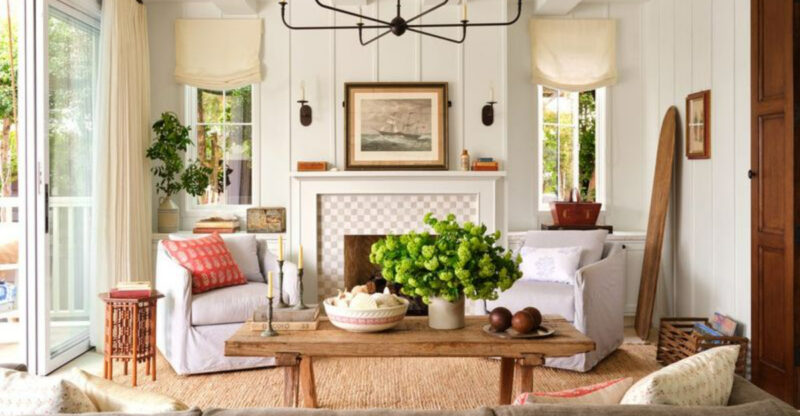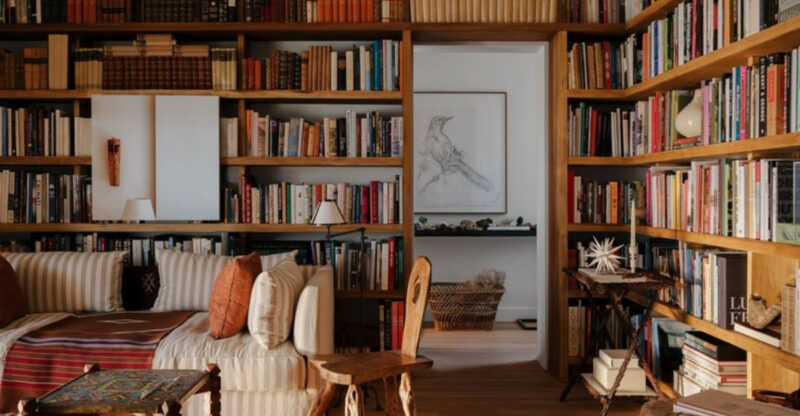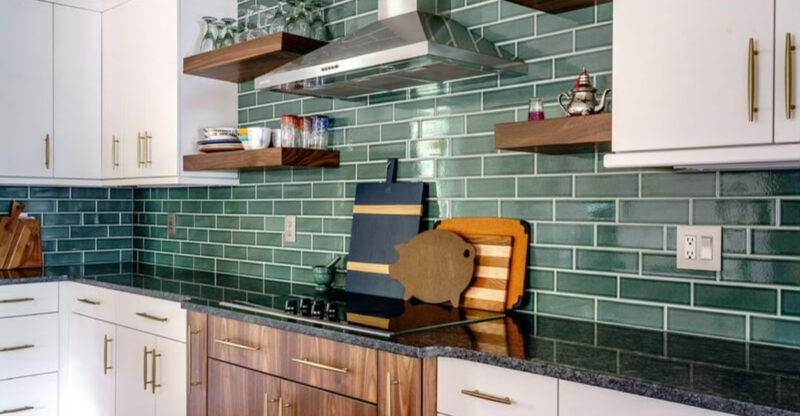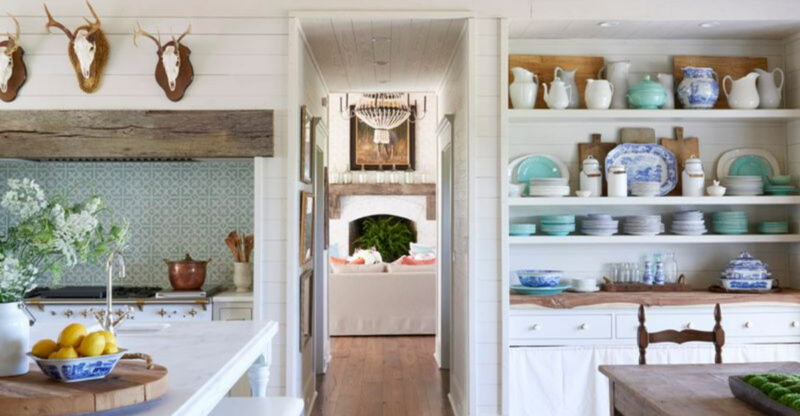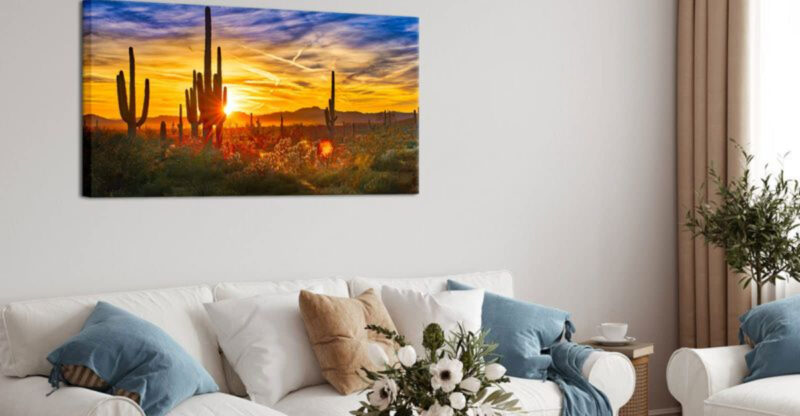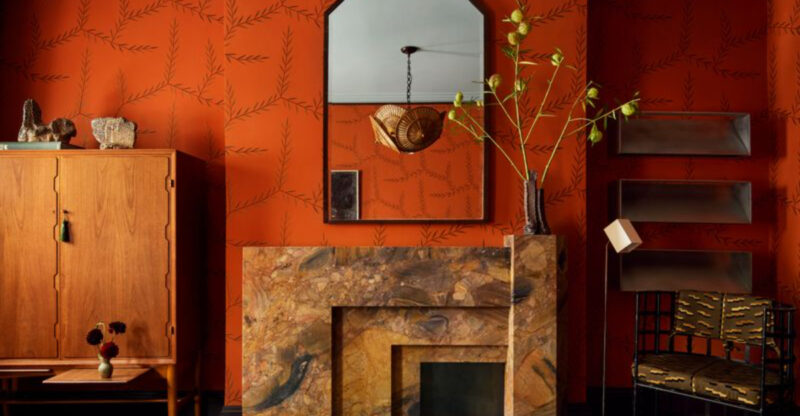15 Decor Fixes For Rooms That Feel ‘Off’
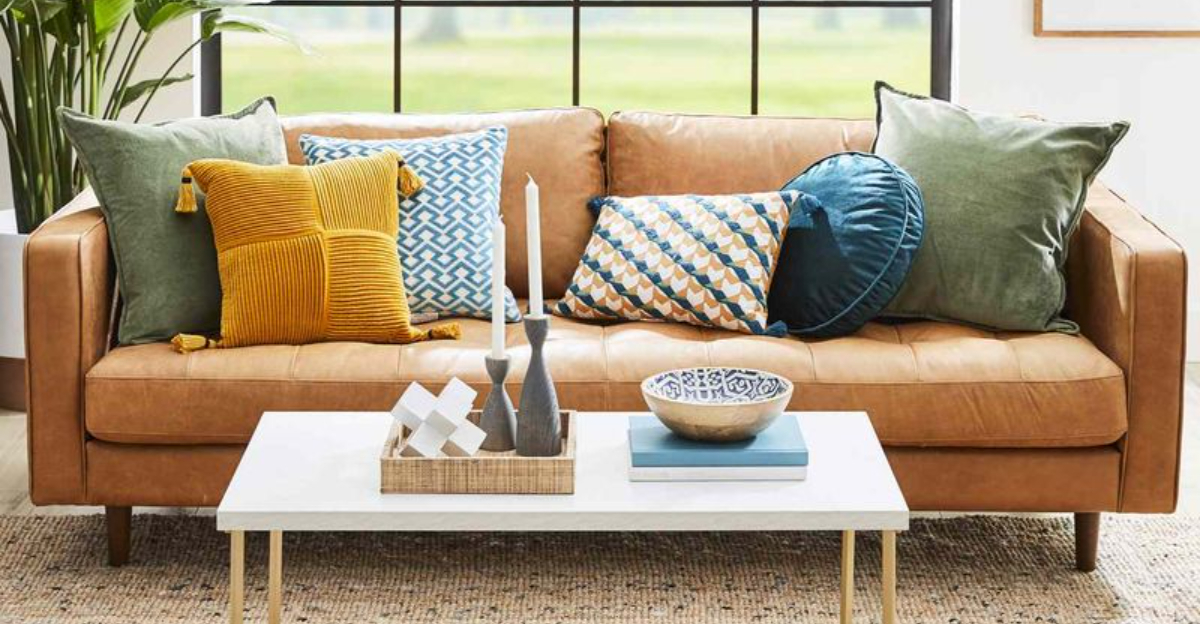
Ever walked into a room in your home and felt something wasn’t quite right?
That weird feeling when a space just doesn’t ‘click’ is more common than you might think. Even the prettiest rooms can sometimes feel awkward, unbalanced, or simply not as cozy as they should be.
With a few smart tweaks, you can transform that off-kilter space into a room that feels perfectly put together.
1. Reposition Furniture for Better Flow
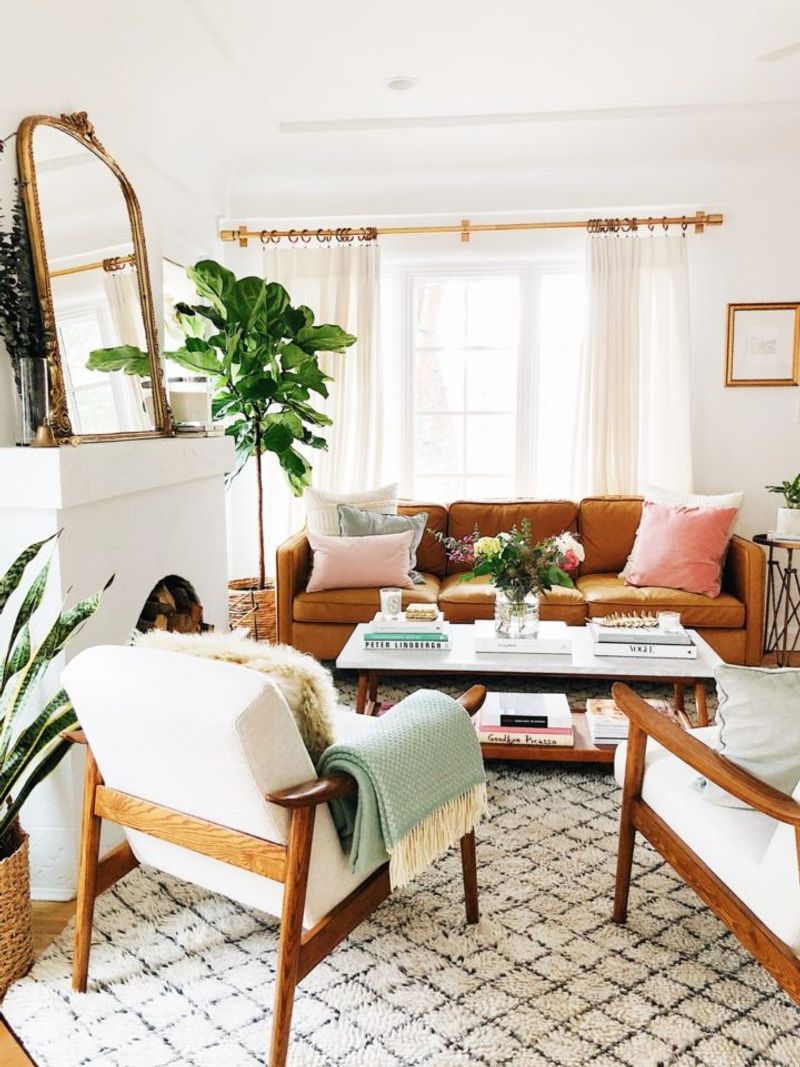
Moving your furniture even a few inches can dramatically change how a room feels. I often find that pushing sofas away from walls creates more intimate conversation areas that actually make rooms feel larger, not smaller.
Start by identifying the focal point maybe it’s a fireplace or a window with a view then arrange seating to face it. Leave clear pathways of at least 30 inches for easy movement through the room.
If your furniture blocks doorways or forces awkward paths around the room, that’s likely why things feel off. Grab a friend to help slide pieces around until the layout invites natural movement rather than obstacle-course navigation.
2. Add a Rug to Anchor the Space
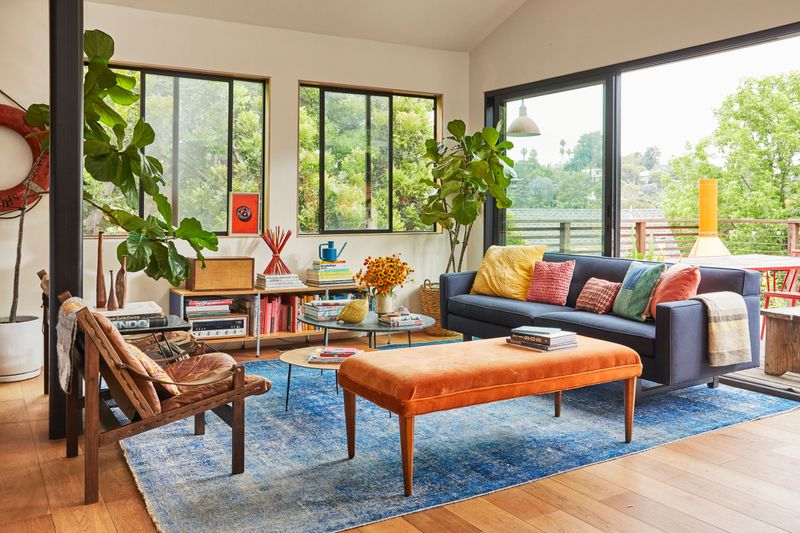
Floating furniture with nothing to ground it can make a room feel disjointed and uncomfortable. I’ve transformed countless spaces simply by adding the right rug.
Your rug should be large enough that at least the front legs of all furniture pieces in a grouping can rest on it. For dining rooms, make sure the rug extends at least 24 inches beyond the table edge so chairs remain on the rug when pulled out.
Texture matters too—a plush rug adds warmth to rooms with lots of hard surfaces, while a flat-weave works better in layered, cozy spaces. The right rug acts like glue, visually connecting separate pieces into one cohesive arrangement.
3. Swap Out Harsh Lighting for Softer Bulbs
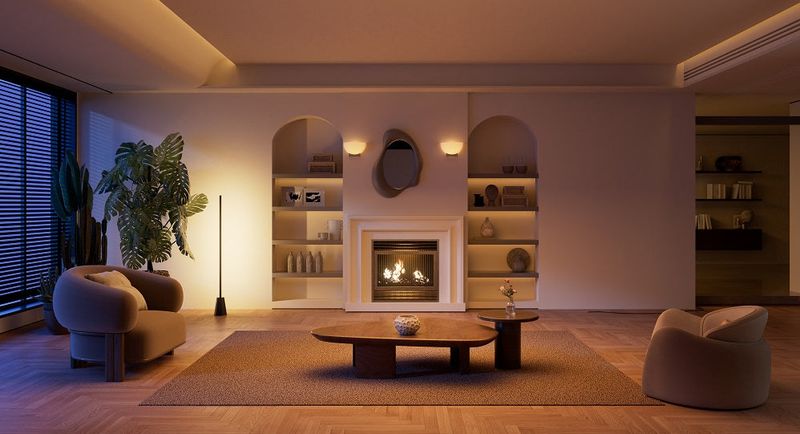
Harsh overhead lighting can make even the most beautiful room feel like an interrogation chamber. I always recommend using bulbs in the 2700-3000K range for a warm, inviting glow rather than cool blue-toned lights that feel clinical.
Consider adding dimmers to control brightness throughout the day. During evening hours, aim for at least three light sources in different heights per room perhaps a floor lamp, table lamp, and candles to create a layered, cozy atmosphere.
Don’t forget about lampshades! A cream or warm-toned shade will further soften light, while a cool white shade might contribute to that uncomfortable feeling. This simple bulb swap often solves the mystery of why a room feels unwelcoming.
4. Introduce a Pop of Color with Accessories
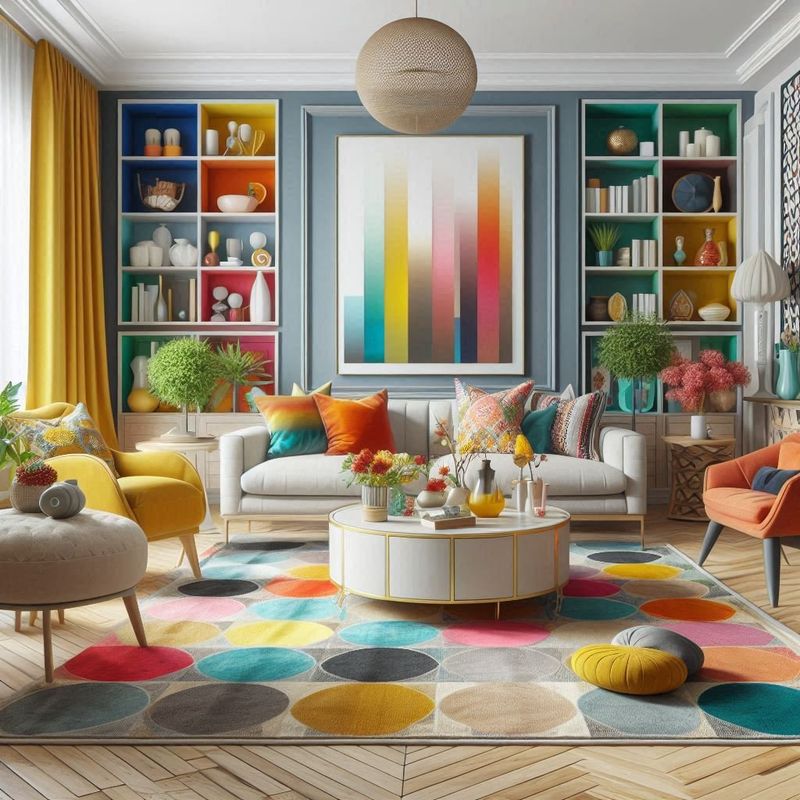
Rooms that feel bland or lifeless usually lack contrast and visual interest. Adding a vibrant throw pillow, bold artwork, or colorful vase can instantly energize a space that feels flat.
When choosing accent colors, look to the color wheel for guidance. Complementary colors (those opposite each other on the wheel) create dynamic energy, while analogous colors (neighbors on the wheel) offer subtle harmony. Even neutral rooms benefit from varying shades and textures.
If you’re nervous about commitment, start small with items that are easy to switch out. Books with colorful spines, fresh flowers, or even a bowl of bright citrus fruits can wake up a tired room without requiring a major investment or permanent change.
5. Hang Artwork at Eye Level
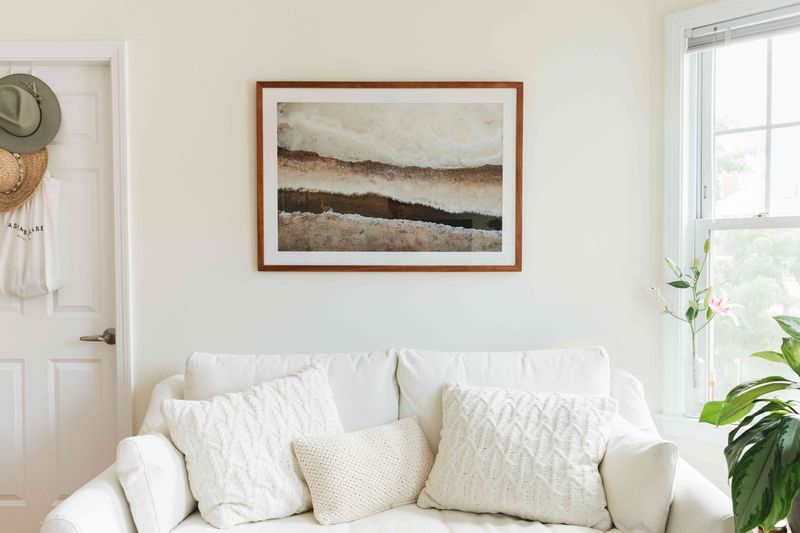
Art hung too high is one of the most common decorating mistakes I see. When frames float near the ceiling, they disconnect from furniture below, creating that subtle feeling that something’s off.
The center of your artwork should hang at approximately 57-60 inches from the floor—that’s average eye level for most adults. When hanging art above furniture, leave 4-8 inches of space between the bottom of the frame and the top of the furniture piece.
Gallery walls should be treated as a single unit, with the center of the entire arrangement at eye level. This simple adjustment brings harmony to your walls and creates a more grounded, intentional feel to rooms that previously seemed awkwardly arranged or imbalanced.
6. Layer Textiles for Warmth and Interest
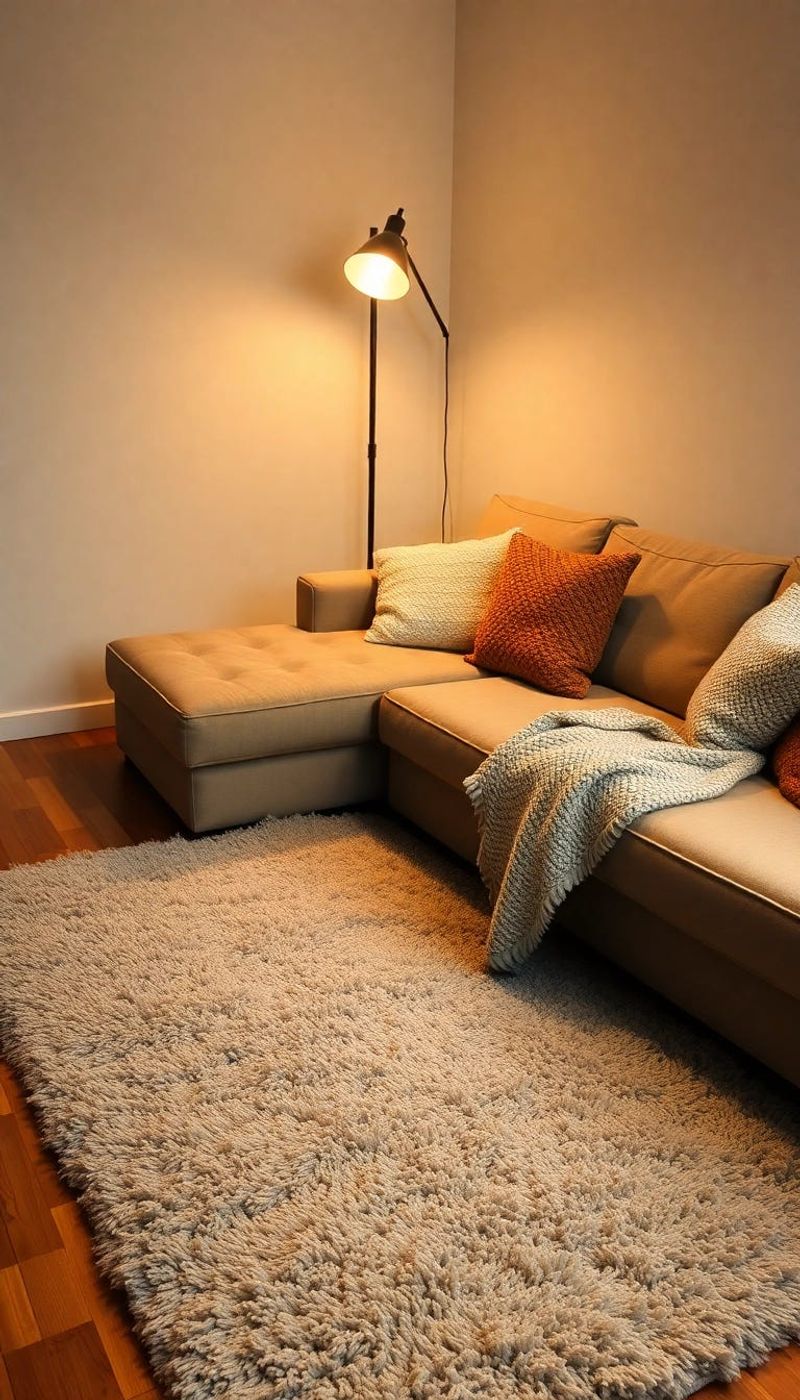
Rooms that feel cold or sterile usually lack softness and texture. I love transforming spaces by adding layers of textiles that invite touch and create visual depth.
Start with window treatments that soften hard window frames—even simple white curtains hung wide and high instantly elevate a room. Then add throw pillows in varying sizes, shapes, and textures rather than perfectly matched sets. A chunky knit throw draped casually over a chair corner adds another dimension.
Don’t forget the power of contrast! Smooth silk pillows pop against nubby linen upholstery, while velvet adds richness against sleeker materials. These tactile elements create a multi-sensory experience that makes rooms feel thoughtfully designed rather than accidentally assembled.
7. Declutter Surfaces for a Cleaner Look
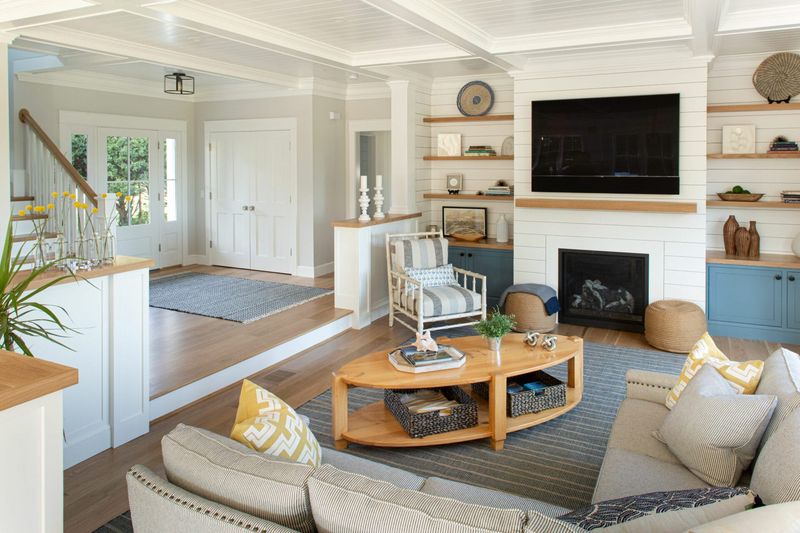
Visual noise from too many small items scattered around can make a room feel chaotic and uncomfortable. I’ve seen countless spaces transformed simply by editing down what’s displayed.
Try clearing all surfaces completely, then selectively return only items that serve a purpose or bring genuine joy. Group smaller objects into collections rather than spreading them throughout the room. Three candlesticks of varying heights make a statement; three random objects scattered across a surface create visual confusion.
If your shelves and tabletops are crowded with practical items that lack beauty, invest in attractive storage solutions. Decorative boxes, baskets, and trays corral necessities while maintaining the clean, intentional look that makes rooms feel harmonious rather than haphazard.
8. Incorporate Plants for Freshness
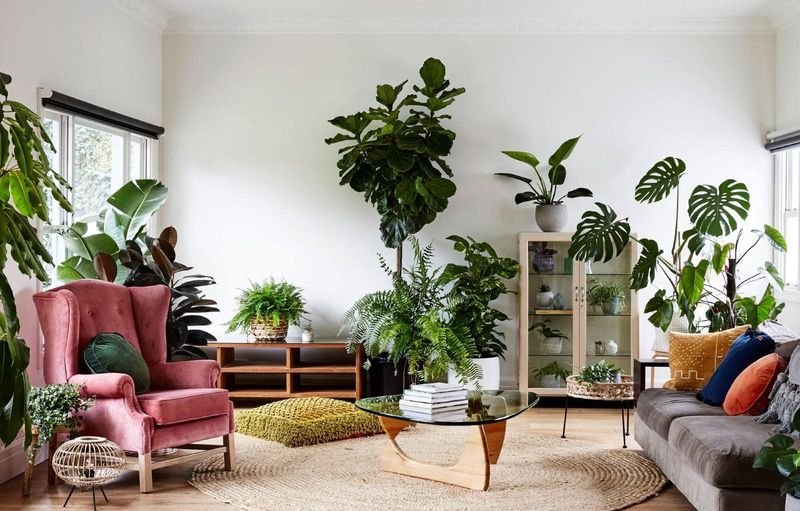
Rooms lacking life and energy often transform instantly with the addition of greenery. I’ve never met a space that wasn’t improved by at least one plant!
For maximum impact, vary the scale and shape of your plants. A tall fiddle leaf fig or palm creates height in corners, while smaller potted plants add interest to shelves or tables. Even artificial plants can work wonders if you choose high-quality varieties and place them thoughtfully.
Beyond visual appeal, plants improve air quality and create a connection to nature that makes spaces feel more welcoming. If your room feels sterile or static, a few strategically placed plants might be the missing element that brings everything into balance and creates that hard-to-define feeling of rightness.
9. Balance Heavy Furniture with Lighter Pieces
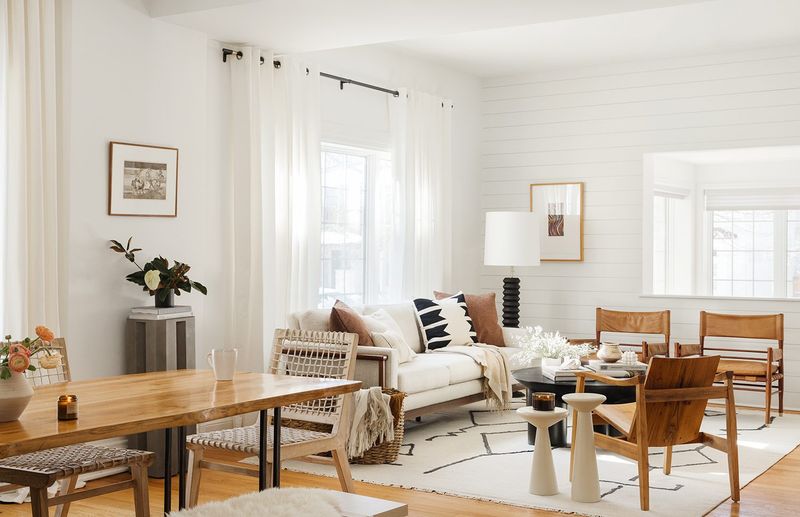
When all your furniture has similar visual weight, rooms can feel monotonous or overwhelming. The key is creating contrast between substantial pieces and airier ones.
Heavy sofas or dark wood cabinets need balancing with glass-topped tables, open-leg chairs, or furniture with visible space beneath it. These lighter elements create breathing room and prevent the space from feeling bottom-heavy or crowded.
Consider the silhouettes in your room too—mixing curved and straight lines creates dynamic tension that keeps things interesting. If your room feels like a sea of similar shapes and weights, introducing one piece with contrasting characteristics might be the perfect fix for that nagging sense of imbalance.
10. Add Mirrors to Reflect Light and Space
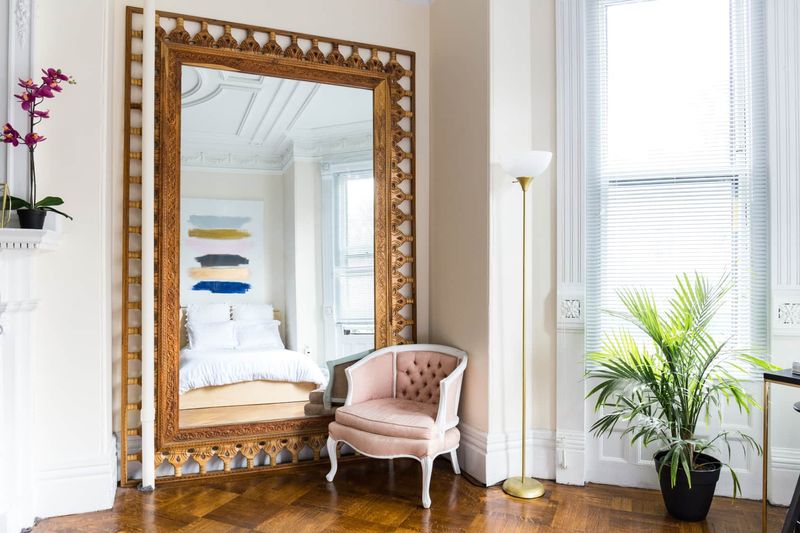
Dark, cramped rooms instantly transform with strategically placed mirrors. I’ve doubled the perceived size of tiny spaces simply by reflecting the right elements.
Position mirrors across from windows to bounce natural light throughout the room, or opposite your most attractive features to visually multiply them. Leaning a large floor mirror against a wall creates depth while providing a practical full-length reflection.
Beyond plain mirrors, consider mirrored furniture pieces or trays that add reflective surfaces at different heights. Even small rooms feel expansive when light bounces off these surfaces throughout the day. If your space feels cave-like or confined, mirrors might provide that magical fix that suddenly makes everything feel right.
11. Replace Outdated Hardware
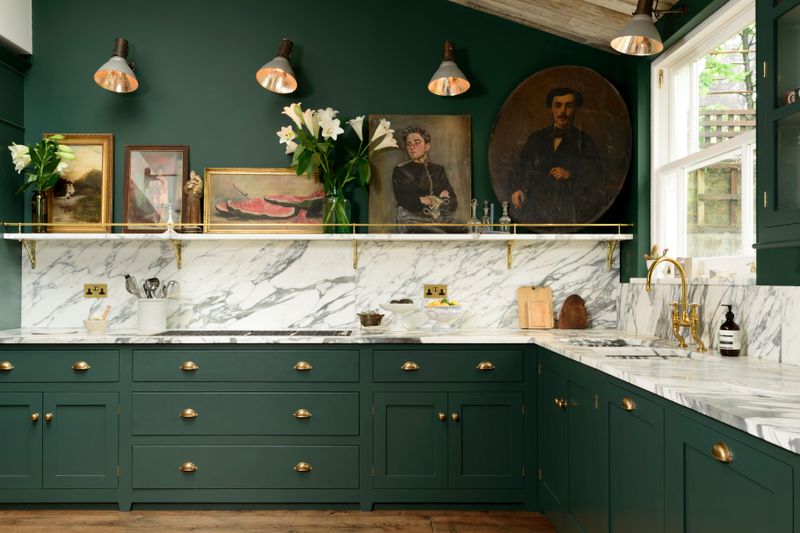
Those tiny metal details on cabinets and drawers have outsized impact on how current a room feels. Swapping dated knobs and pulls is one of my favorite low-cost, high-impact fixes for rooms that seem stuck in the wrong decade.
Modern matte black hardware instantly updates honey oak cabinets, while brass or copper adds warmth to white or gray surfaces. For maximum versatility, choose simple shapes that complement your furniture style rather than competing with it.
Don’t stop at the kitchen and bath consider updating doorknobs, hinges, and even furniture hardware throughout your home for a cohesive look. This seemingly minor change creates that polished, intentional feeling that distinguishes thoughtfully designed spaces from those that evolved without clear direction.
12. Group Décor Items in Odd Numbers
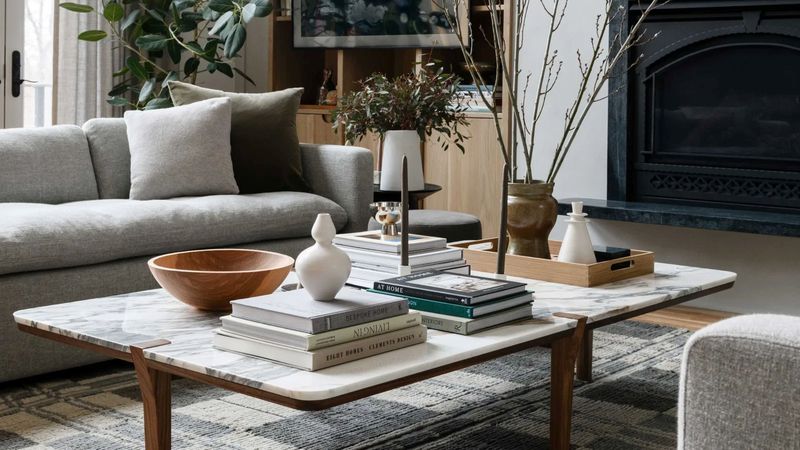
Ever arranged items perfectly symmetrically yet felt something was missing? The secret lies in odd-numbered groupings, which our brains find more interesting and dynamic than even-numbered ones.
Groups of three or five objects create natural visual triangles that draw the eye around a vignette. Vary the height, width, and texture within each grouping while maintaining a common element—perhaps color or material—that ties everything together.
When styling shelves or tabletops, try the “high, medium, low” approach with objects of different heights. This creates natural rhythm and prevents that static, showroom feel. If your carefully arranged décor still feels flat or uninteresting, breaking symmetry and embracing odd numbers might solve the puzzle.
13. Use Throw Pillows to Tie Colors Together
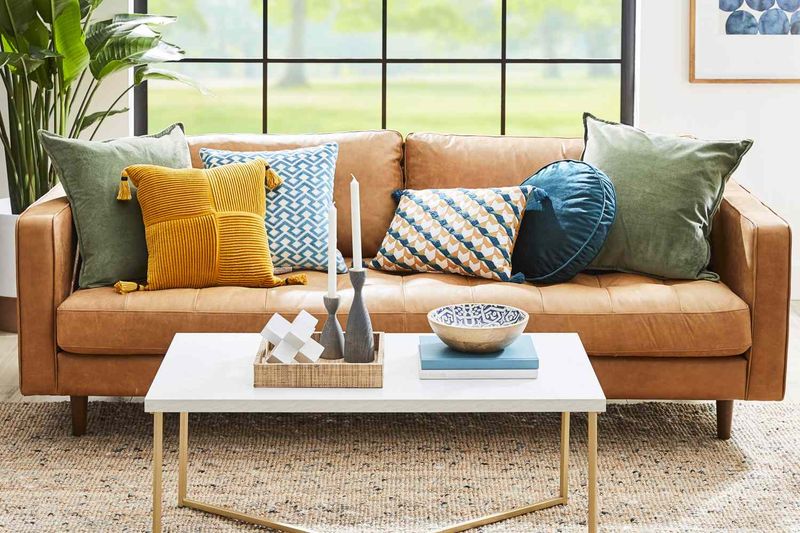
Rooms that feel disjointed often lack a color story that connects separate elements. Throw pillows are my secret weapon for creating cohesion without major purchases or commitments.
Look for pillows that incorporate multiple colors from your room perhaps pulling the blue from artwork, the green from plants, and the neutral from your sofa. This creates visual pathways that lead the eye comfortably around the space rather than letting it bounce disconnectedly between unrelated elements.
Mix patterns at different scales (large, medium, small) while keeping your color palette consistent for a collected-over-time look that feels intentional rather than matchy-matchy. When everything in a room speaks to something else, that unsettling “off” feeling disappears.
14. Update Window Treatments
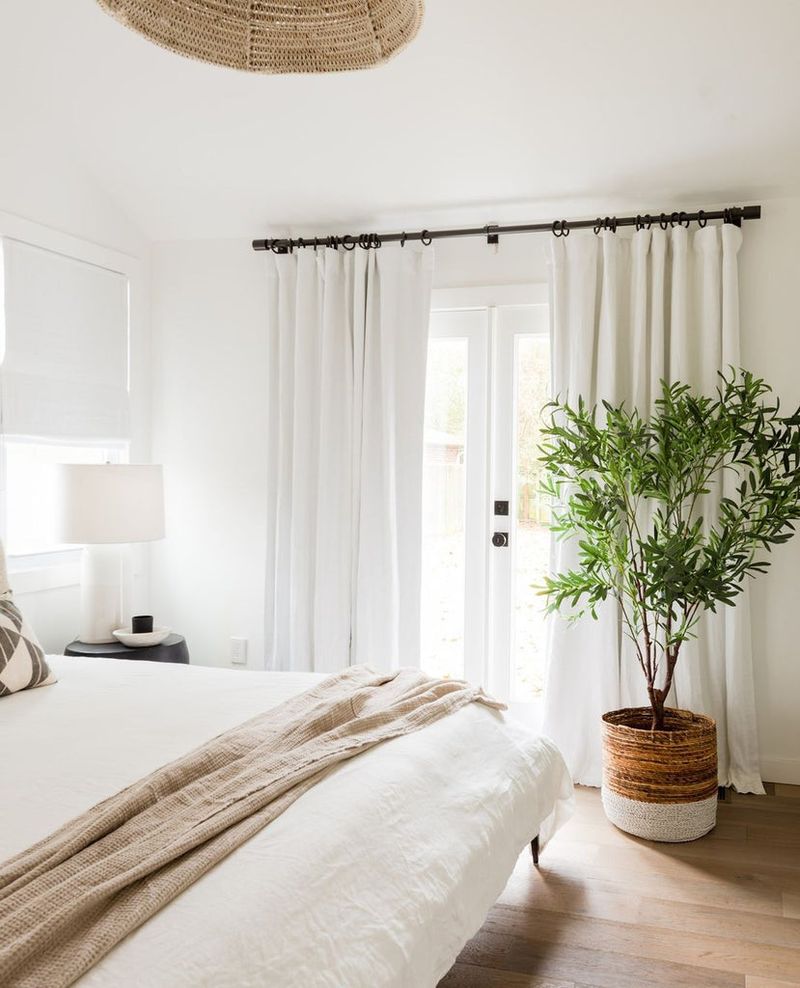
Naked windows or outdated treatments can make even beautiful rooms feel unfinished or stuck in the wrong era. The right window coverings frame views and soften architecture while adding crucial texture.
Hang curtains high (just below the ceiling) and wide (extending 8-12 inches beyond the window frame on each side) to create the illusion of larger windows and higher ceilings. Choose panels that kiss the floor or pool slightly for a custom look.
If privacy isn’t a concern, sheer curtains filter light beautifully while adding softness. For rooms needing both light control and style, layered solutions like woven blinds under fabric panels offer flexibility. This seemingly simple update often provides that finishing touch that makes a room finally feel complete.
15. Define Zones in Open-Plan Areas
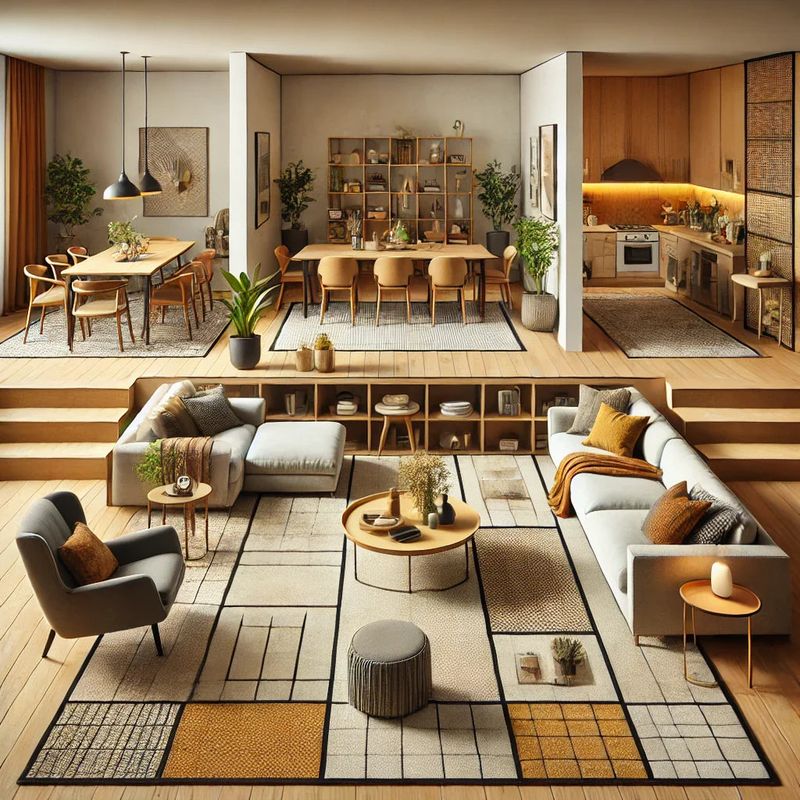
Vast open spaces without clear boundaries often feel uncomfortable and confusing. Creating distinct zones helps our brains make sense of how to use different areas within the same room.
Area rugs are perfect for visually separating conversation areas from dining or work spaces. Furniture arrangement matters too—try positioning sofas or bookcases perpendicular to walls to create natural room dividers without blocking light or views.
Lighting plays a crucial role in zone definition. A pendant over a dining table or floor lamp beside a reading chair signals different activities within the larger space. If your open-plan area feels like an awkward gymnasium rather than a welcoming multi-functional space, these subtle dividing techniques might be the missing ingredient.

